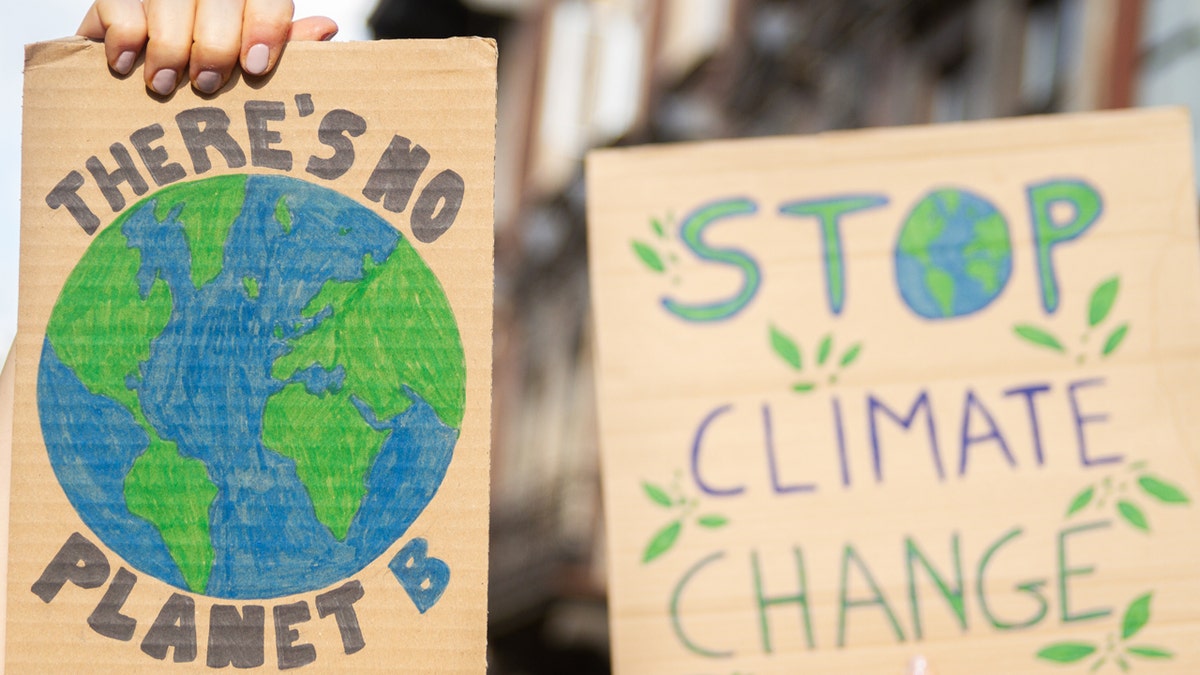Piers Morgan rips climate protesters hurling soup at Mona Lisa: 'Complete and utter imbeciles'
Fox Nation host Piers Morgan joined 'Fox & Friends' to discuss his reaction to climate protesters defacing the Mona Lisa.
An opinion piece published in Los Angeles Times this week did not condemn climate change activists who attempt to vandalize the world’s greatest pieces of art, but rather rationalized how their actions make their activism "more acceptable" and "more successful."
The opinion piece, written for "The Conversation " by USC professor Shannon Gibson and published as part of a partnership with the LA Times, did a dive into how there is a "strategy" behind "deliberately shocking" activism like throwing soup on the glass covering the Mona Lisa.
Gibson wrote, "By combining radical forms of civil disobedience with more mainstream actions, such as lobbying and state-sanctioned demonstrations, activists not only grab the public’s attention, they make less aggressive tactics more acceptable and possibly more successful."
WORLD ECONOMIC FORUM ELITES BLASTED FOR TALKING ABOUT CLIMATE DANGERS POSED BY COFFEE: 'HANDS OFF'

In this grab taken from video, a view of the scene after activists hurled soup at the glass protecting the Mona Lisa, at the Louvre Museum, in Paris, Sunday. Jan. 28, 2024. (AP Photo/Clement Lanot)
The article came just days after two climate activists threw soup at Leonardo da Vinci’s Mona Lisa in The Louvre, which is protected by glass.
In video of the incident, the two activists threw the soup and then shouted, "What’s the most important thing? Art, or right to a healthy and sustainable food?"
This is just the latest in a string of climate activists throwing some form of liquid at famous paintings. In another incident last year, climate activists threw soup at one of Van Gogh’s classic paintings, which was also protected by glass.
Gibson continued, explaining why it is a savvy protest strategy for these activists.
She wrote, "In meetings with global activists in recent weeks, my colleagues and I have noticed their emphasis shifting away from government policy fights to battles in the streets, political arenas and courtrooms. The lines between reformists and radicals, and between global and grassroots mobilizers, are blurring, and a new sense of engagement is taking root."
"When in-your-face activism takes place at the same time as formal institutional challenges, studies show the combination can help increase awareness of the problem and support for moderate action," Gibson added, noting that this tactic is called the "radical flank effect."
SCIENTISTS USE X-RAYS TO REVEAL CLUE ABOUT TECHNIQUES DA VINCI USED WHEN PAINTING 'MONA LISA'

The L.A Times column argued that shocking protests have been a successful strategy for climate change activists. (Adobe Stock)
The author said that this tactic was also effective during the civil rights era and feminist movements in the 20th century.
Giving an example, the columnist said that "in 2019 London Mayor Sadiq Khan met with Extinction Rebellion" after he initially denounced their graphic protests. "Britain’s environment secretary also met with the group," she noted, adding, "and days later Parliament declared a climate emergency, making the United Kingdom the first nation to do so."
Gibson mentioned that because President Biden hasn’t moved fast enough on climate initiatives – despite promising to do so during his 2020 campaign – climate activists "have made him a recent target of protests and hecklers."
Finally, Gibson rebuked those who criticize these shocking protests, saying they miss a "crucial point." "Often, their aim is to influence government and business decision-makers."
"Objections to acts of climate activism such as the latest food fight at the Louvre are understandable but might miss the point. Protesters’ perceived madness is indeed method," the author concluded.


